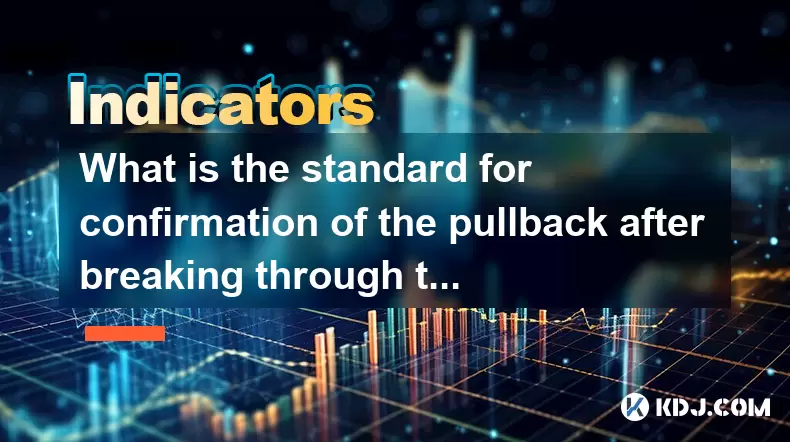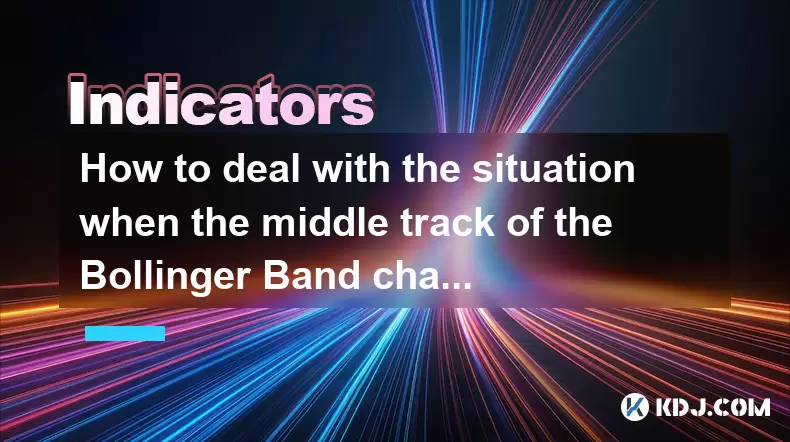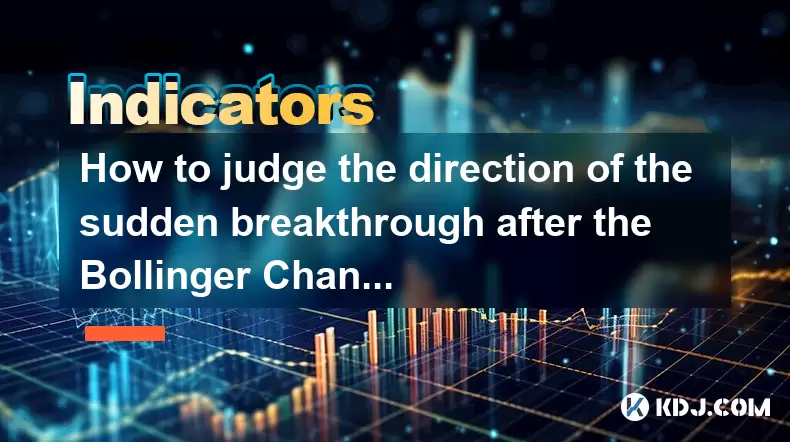-
 Bitcoin
Bitcoin $101,898.5005
-0.75% -
 Ethereum
Ethereum $2,258.1125
-1.07% -
 Tether USDt
Tether USDt $1.0004
0.01% -
 XRP
XRP $2.0178
-2.93% -
 BNB
BNB $624.0243
-1.53% -
 Solana
Solana $134.3298
-0.90% -
 USDC
USDC $0.9999
0.01% -
 TRON
TRON $0.2675
-2.05% -
 Dogecoin
Dogecoin $0.1538
-1.96% -
 Cardano
Cardano $0.5482
-1.11% -
 Hyperliquid
Hyperliquid $35.5636
5.45% -
 Bitcoin Cash
Bitcoin Cash $453.4902
-1.66% -
 Sui
Sui $2.5134
-2.97% -
 UNUS SED LEO
UNUS SED LEO $9.1292
1.77% -
 Chainlink
Chainlink $11.8457
-1.60% -
 Stellar
Stellar $0.2312
-2.73% -
 Avalanche
Avalanche $16.9721
0.29% -
 Toncoin
Toncoin $2.7549
-3.82% -
 Shiba Inu
Shiba Inu $0.0...01081
-1.10% -
 Litecoin
Litecoin $80.8250
-0.71% -
 Hedera
Hedera $0.1374
0.21% -
 Monero
Monero $305.4827
-2.36% -
 Ethena USDe
Ethena USDe $1.0006
0.00% -
 Dai
Dai $1.0000
-0.01% -
 Polkadot
Polkadot $3.2085
-3.12% -
 Bitget Token
Bitget Token $4.0845
-3.13% -
 Uniswap
Uniswap $6.3353
-1.63% -
 Pi
Pi $0.5085
-0.70% -
 Pepe
Pepe $0.0...08913
-3.82% -
 Aave
Aave $232.7090
-0.58%
Is it effective when the DIF line suddenly crosses the zero axis when the volume is shrinking and the market is trading sideways?
The DIF line crossing zero in low-volume, sideways crypto markets often lacks reliability and should be confirmed with other indicators or price action.
Jun 23, 2025 at 07:29 pm

Understanding the DIF Line in Technical Analysis
The DIF line, or the Difference Line, is a critical component of the MACD (Moving Average Convergence Divergence) indicator, widely used in technical analysis across cryptocurrency and traditional financial markets. It represents the difference between the 12-period EMA (Exponential Moving Average) and the 26-period EMA of an asset's price. When traders observe the DIF line crossing the zero axis, it signals a shift in momentum.
In the context of cryptocurrency trading, where volatility is high and trends can reverse rapidly, understanding these shifts becomes crucial. The DIF line crossing above or below zero indicates whether the short-term average is higher or lower than the long-term average, respectively. This often hints at potential bullish or bearish momentum.
However, when this crossover occurs during shrinking volume and sideways market conditions, its effectiveness as a reliable signal may be questioned.
Volume Shrinkage: A Sign of Indecision
When volume decreases significantly, especially after a prolonged trend, it typically reflects market indecision or a lack of conviction among traders. In the crypto market, where sentiment can change rapidly due to news or macroeconomic factors, shrinking volume might suggest that neither buyers nor sellers are pushing hard for a move.
During such periods, technical indicators like the MACD may produce false signals because they rely heavily on momentum and price movement. If the DIF line crosses the zero axis while volume is shrinking, it could simply be a result of minor price fluctuations rather than a genuine reversal or continuation.
This raises the question: Is the DIF line still effective under such low-volume conditions?
Sideways Market Conditions: A Neutral Battlefield
A sideways market, also known as a range-bound market, occurs when prices trade within a relatively tight range without showing a clear upward or downward trend. In the cryptocurrency space, sideways movements are common after sharp rallies or sell-offs, as the market pauses to consolidate.
Under these circumstances, momentum oscillators like the MACD may generate multiple crossovers, including the DIF crossing the zero line. However, since there's no strong directional bias, these crossovers often fail to lead to meaningful moves. Traders who act solely on such signals may find themselves entering positions that quickly get trapped in the range.
The effectiveness of the DIF line crossing zero in a sideways market depends largely on whether it coincides with other confirming indicators or patterns. Without such confirmation, it's risky to assume that the crossover will lead to a breakout or trend resumption.
How to Evaluate the DIF Zero Axis Crossover in Low-Volume Sideways Markets
To assess the validity of a DIF line crossing the zero axis in a low-volume, sideways environment, consider the following steps:
- Check Volume Trends: Use tools like the On-Balance Volume (OBV) or Volume Weighted Average Price (VWAP) to determine if there's any hidden accumulation or distribution happening beneath the surface.
- Look for Confluence with Other Indicators: Combine the MACD reading with support/resistance levels, RSI divergence, or candlestick patterns to filter out false signals.
- Analyze Timeframes: Sometimes a crossover on the 1-hour chart may not align with what’s happening on the 4-hour or daily chart. Always check higher timeframes to avoid noise-induced trades.
- Observe Price Action: If the DIF crosses zero but price fails to break key levels or show strong momentum, it's likely a fakeout.
- Use Moving Averages for Confirmation: If the price is still stuck between the 50-day and 200-day moving averages, then a DIF crossover alone won't be sufficient to predict a trend change.
By applying these checks, traders can better judge whether the DIF line crossing the zero axis is a valid signal or just a temporary fluctuation.
Practical Steps to Confirm Signal Validity
If you're considering taking action based on a DIF line crossing the zero axis during a sideways market with shrinking volume, follow these detailed steps:
- Plot the MACD histogram alongside the DIF line to see if momentum is increasing or decreasing.
- Identify recent swing highs and lows to understand the current structure of the range.
- Overlay Fibonacci retracement levels to anticipate potential breakout points.
- Wait for a candle close beyond key levels before acting on the signal.
- Set up alerts for sudden spikes in volume or volatility that might confirm the direction suggested by the DIF line.
These steps help reduce the risk of acting on premature or misleading signals. They also provide a structured framework for decision-making, which is essential in the unpredictable world of crypto trading.
Frequently Asked Questions
Q1: Can the DIF line crossing zero ever be reliable in a sideways market?
Yes, but only when combined with other confirming signals such as volume surges, candlestick patterns, or breakouts from key support/resistance levels.
Q2: How does volume impact the reliability of MACD signals in crypto trading?
Low volume often leads to false MACD signals. High volume, especially when aligned with a DIF line crossover, increases the likelihood of a genuine trend change.
Q3: What timeframes are best suited for analyzing DIF line behavior?
While intraday traders may focus on 1-hour or 4-hour charts, checking the daily chart helps filter out noise and confirms broader trends more effectively.
Q4: Are there alternative indicators that work better than MACD in sideways markets?
Yes, indicators like Bollinger Bands, Ichimoku Cloud, or Stochastic RSI are often preferred in sideways conditions due to their ability to highlight overbought/oversold zones and consolidation phases.
Disclaimer:info@kdj.com
The information provided is not trading advice. kdj.com does not assume any responsibility for any investments made based on the information provided in this article. Cryptocurrencies are highly volatile and it is highly recommended that you invest with caution after thorough research!
If you believe that the content used on this website infringes your copyright, please contact us immediately (info@kdj.com) and we will delete it promptly.
- Cryptocurrencies, Coingecko, and Trending Tokens: What's Hot Now?
- 2025-06-23 23:05:12
- FUNToken: Decoding Past Trends and Getting Started in the Gaming Crypto Sphere
- 2025-06-23 22:25:12
- BTC Price Analysis: Navigating Volatility and the Quest for a New ATH
- 2025-06-23 22:25:12
- Genesis, Bitcoin Mining, and Air-Cooled Miners: A New Era?
- 2025-06-23 22:45:12
- Coinbase's Growth and Resilience: Navigating the Crypto Landscape
- 2025-06-23 22:45:12
- Bitcoin Options Market: Bullish Bets Amidst Geopolitical Jitters
- 2025-06-23 22:51:52
Related knowledge

What is the significance of the gap formed by the gap opening not being filled within five days?
Jun 23,2025 at 09:42pm
Understanding Gaps in Cryptocurrency TradingIn the world of cryptocurrency trading, a gap refers to a situation where the price of an asset jumps from one level to another without any trading activity occurring between those two levels. This often happens over weekends or holidays when the market is closed, and significant news or events occur that impa...

What is the standard for confirmation of the pullback after breaking through the neckline with large volume?
Jun 23,2025 at 11:28pm
Understanding the Neckline in Technical AnalysisIn technical analysis, the neckline is a critical support or resistance level that appears in chart patterns such as head and shoulders, double tops, and double bottoms. It typically connects two or more lows (in the case of a head and shoulders top) or highs (in the case of a head and shoulders bottom). W...

How to deal with the situation when the middle track of the Bollinger Band changes from support to resistance?
Jun 23,2025 at 11:22pm
Understanding the Bollinger Band Middle TrackThe Bollinger Band is a widely used technical indicator in cryptocurrency trading. It consists of three lines: the upper band, the lower band, and the middle track, which is typically a 20-period simple moving average (SMA). Traders often rely on the middle track as a dynamic support or resistance level. Howe...

Does the second golden cross of MACD above the zero axis represent the continuation of strength?
Jun 23,2025 at 08:21pm
Understanding the MACD IndicatorThe Moving Average Convergence Divergence (MACD) is a widely used technical analysis tool in cryptocurrency trading. It consists of three main components: the MACD line, the signal line, and the histogram. The MACD line is calculated by subtracting the 26-period Exponential Moving Average (EMA) from the 12-period EMA. The...

How to judge the direction of the sudden breakthrough after the Bollinger Channel narrows to the extreme?
Jun 23,2025 at 11:00pm
Understanding the Bollinger Channel and Its Narrowing PatternThe Bollinger Channel is a widely used technical indicator in cryptocurrency trading, consisting of three bands: the middle band (a simple moving average), and two outer bands that represent standard deviations from the middle line. When the price consolidates for an extended period, the chann...

Is it effective when the DIF line suddenly crosses the zero axis when the volume is shrinking and the market is trading sideways?
Jun 23,2025 at 07:29pm
Understanding the DIF Line in Technical AnalysisThe DIF line, or the Difference Line, is a critical component of the MACD (Moving Average Convergence Divergence) indicator, widely used in technical analysis across cryptocurrency and traditional financial markets. It represents the difference between the 12-period EMA (Exponential Moving Average) and the...

What is the significance of the gap formed by the gap opening not being filled within five days?
Jun 23,2025 at 09:42pm
Understanding Gaps in Cryptocurrency TradingIn the world of cryptocurrency trading, a gap refers to a situation where the price of an asset jumps from one level to another without any trading activity occurring between those two levels. This often happens over weekends or holidays when the market is closed, and significant news or events occur that impa...

What is the standard for confirmation of the pullback after breaking through the neckline with large volume?
Jun 23,2025 at 11:28pm
Understanding the Neckline in Technical AnalysisIn technical analysis, the neckline is a critical support or resistance level that appears in chart patterns such as head and shoulders, double tops, and double bottoms. It typically connects two or more lows (in the case of a head and shoulders top) or highs (in the case of a head and shoulders bottom). W...

How to deal with the situation when the middle track of the Bollinger Band changes from support to resistance?
Jun 23,2025 at 11:22pm
Understanding the Bollinger Band Middle TrackThe Bollinger Band is a widely used technical indicator in cryptocurrency trading. It consists of three lines: the upper band, the lower band, and the middle track, which is typically a 20-period simple moving average (SMA). Traders often rely on the middle track as a dynamic support or resistance level. Howe...

Does the second golden cross of MACD above the zero axis represent the continuation of strength?
Jun 23,2025 at 08:21pm
Understanding the MACD IndicatorThe Moving Average Convergence Divergence (MACD) is a widely used technical analysis tool in cryptocurrency trading. It consists of three main components: the MACD line, the signal line, and the histogram. The MACD line is calculated by subtracting the 26-period Exponential Moving Average (EMA) from the 12-period EMA. The...

How to judge the direction of the sudden breakthrough after the Bollinger Channel narrows to the extreme?
Jun 23,2025 at 11:00pm
Understanding the Bollinger Channel and Its Narrowing PatternThe Bollinger Channel is a widely used technical indicator in cryptocurrency trading, consisting of three bands: the middle band (a simple moving average), and two outer bands that represent standard deviations from the middle line. When the price consolidates for an extended period, the chann...

Is it effective when the DIF line suddenly crosses the zero axis when the volume is shrinking and the market is trading sideways?
Jun 23,2025 at 07:29pm
Understanding the DIF Line in Technical AnalysisThe DIF line, or the Difference Line, is a critical component of the MACD (Moving Average Convergence Divergence) indicator, widely used in technical analysis across cryptocurrency and traditional financial markets. It represents the difference between the 12-period EMA (Exponential Moving Average) and the...
See all articles
























































































